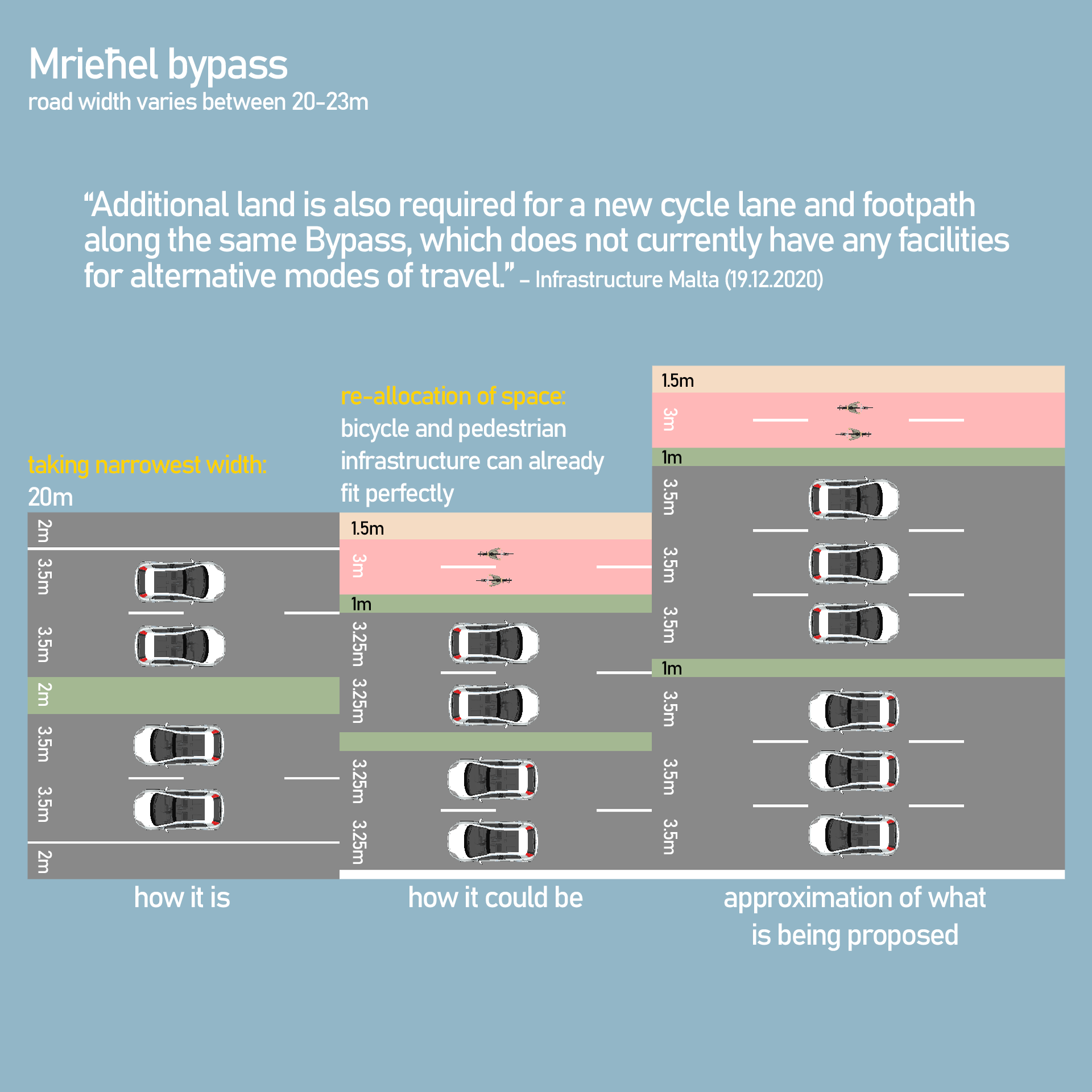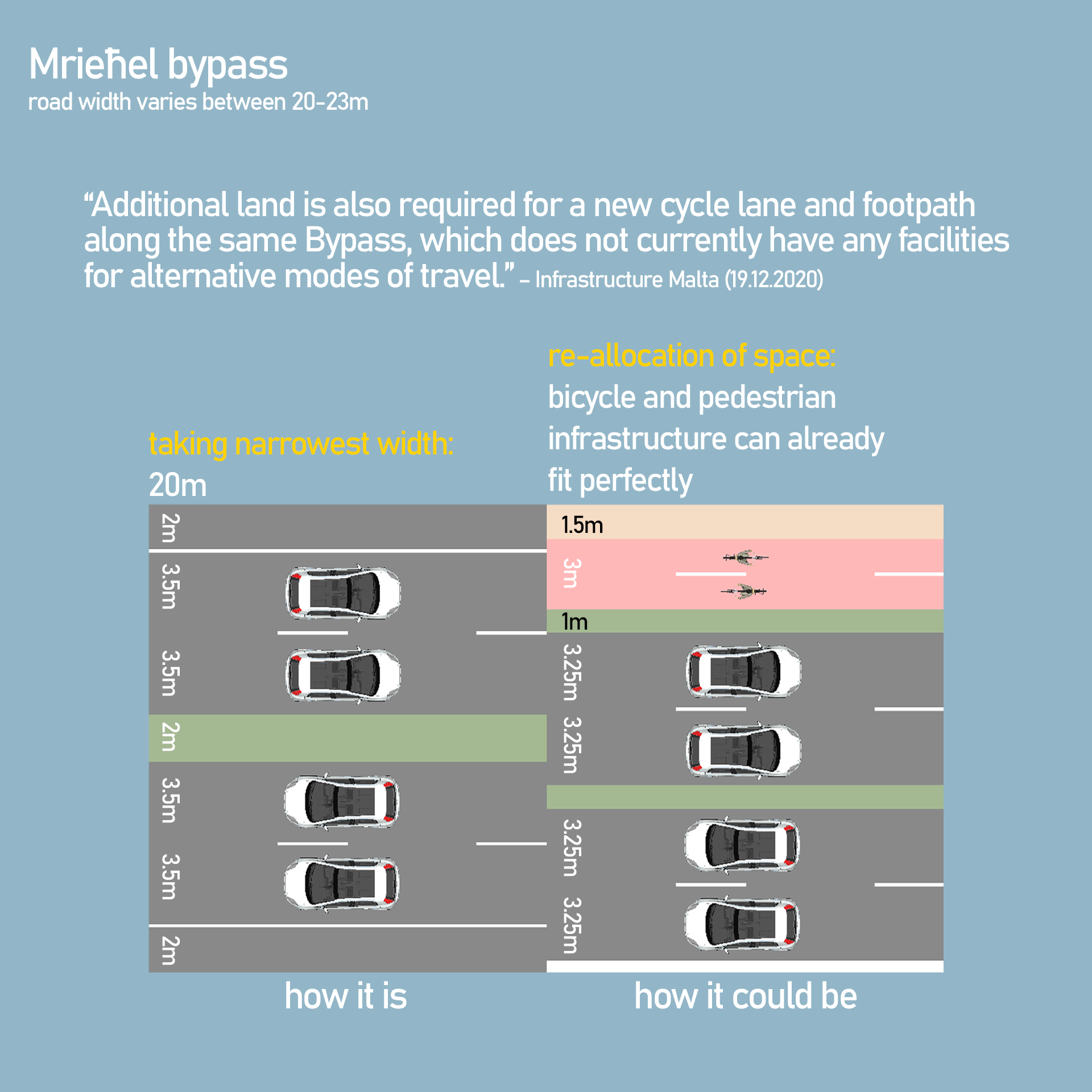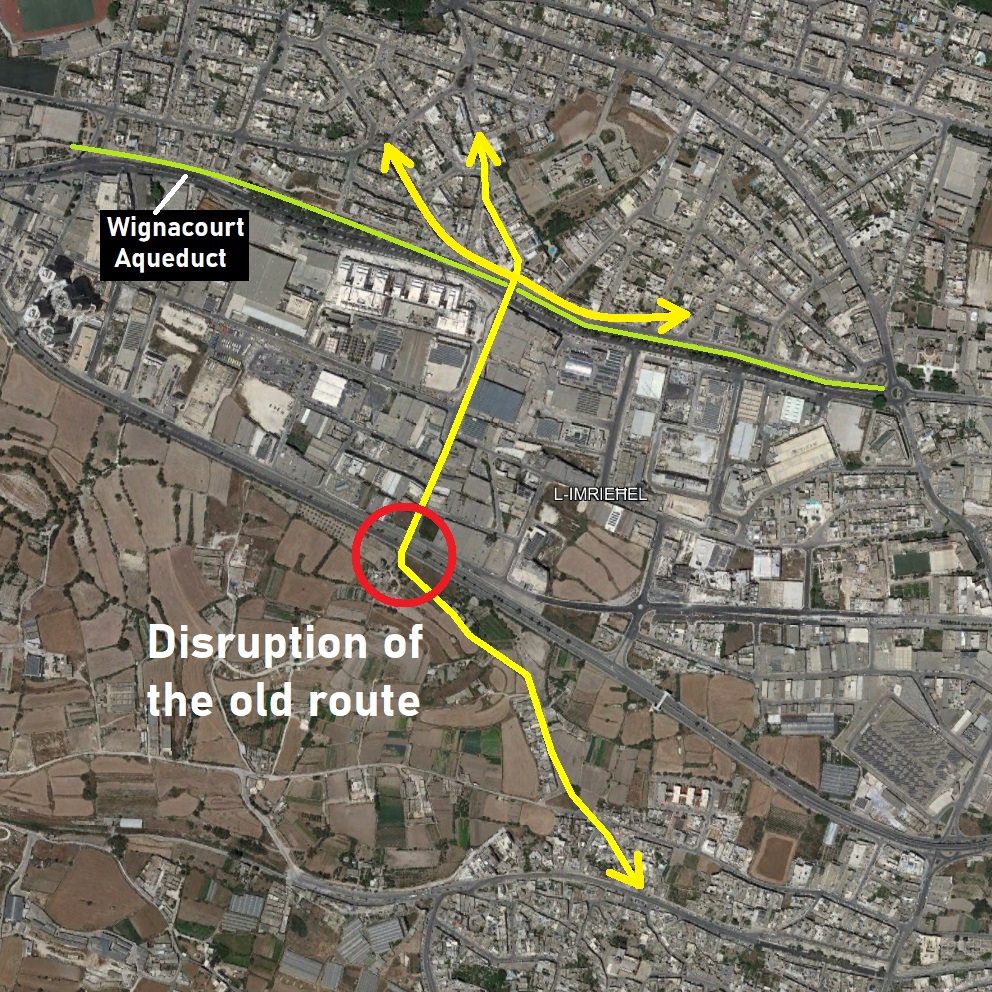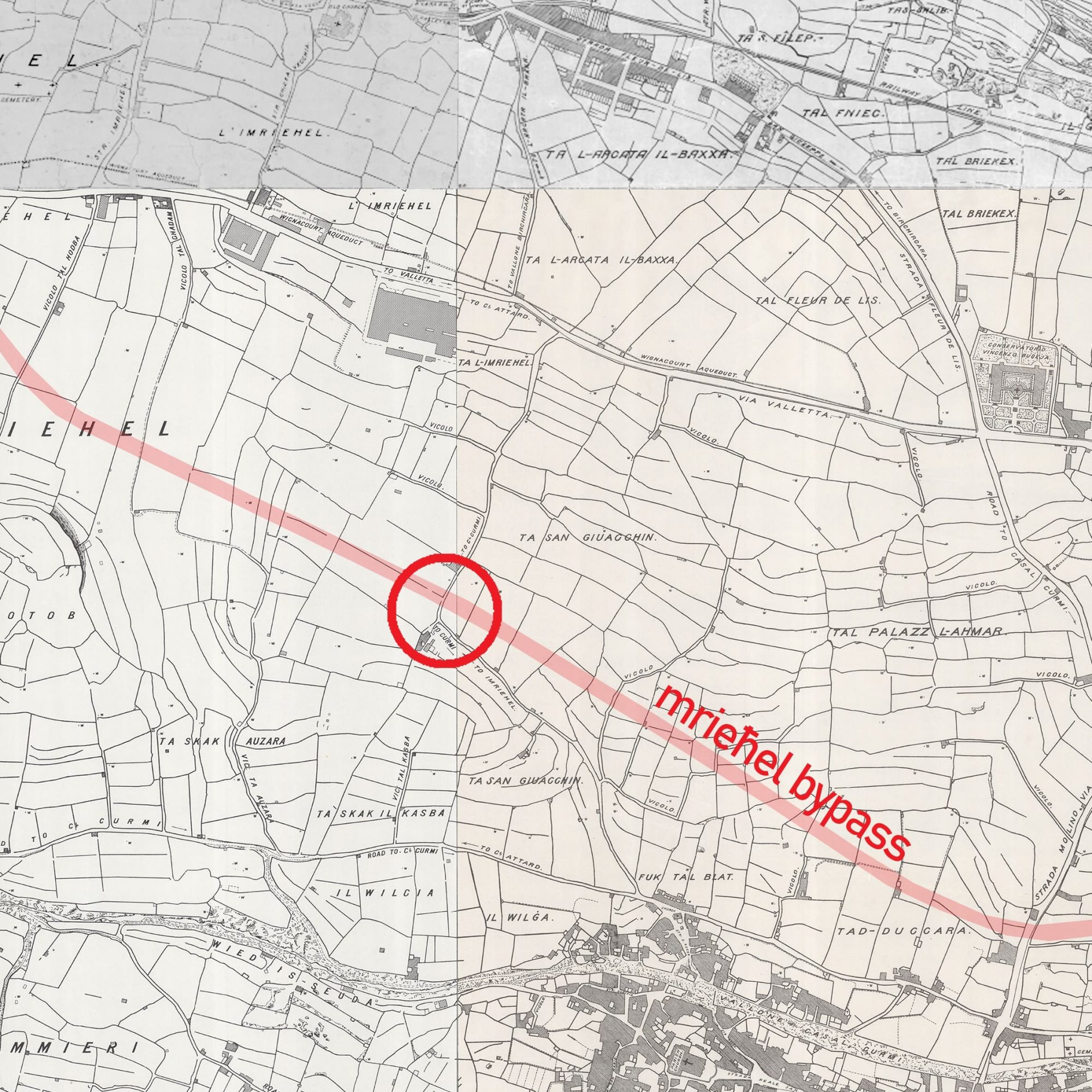Rota reacted to the claims made by Infrastructure Malta on the 19th of December 2020, whereby it stated that “additional land is also required for a new cycle lane and footpath along the same Bypass, which does not currently have any facilities for alternative modes of travel. “
On the 22nd of October, Infrastructure Malta had shown the proposed plans of the Mrieħel flyover with the cycle lane on the side of the industrial estate and residential area, to representatives of Rota. At the time, no additional land take-up was mentioned. Rota had suggested several proposals to ensure that the cycling connections between Qormi and Mrieħel would remain accessible and rendered safe. Moreover, Rota suggested that the proposed roundabout design would prioritise pedestrian and bicycle traffic.
Unfortunately, a few weeks later, on the 16th of November, Rota was informed by Infrastructure Malta that the cycle lane was to be removed from the inner side, and against Rota’s advice, redesigned on the periphery next to the fields. Rota had then informed Infrastructure Malta that this proposal was unacceptable as it would become useless and unsafe for people travelling by bicycles.
Even during discussions with Infrastructure Malta about the Central Link Project, Rota had highlighted several existing rural roads in Qormi valley such as Triq il-Belt Valletta, Triq il-Ħofor, and Triq Hannibal (the latter of which has seen its access to Attard closed off for cyclists), without taking any additional agricultural land.
Following this, it has unfortunately become clear that Infrastructure Malta is only using cycling infrastructure as a pretext to take up more land for road widening without considering the needs of the users for this infrastructure. As the image below shows, there is enough space to create safe cycling infrastructure without taking up additional land.
Rota reiterates that cycling infrastructure is to be as safe, convenient and direct as possible, and what has been designed by Infrastructure Malta falls short of reaching these required attributes.
Apart from Rota’s proposal of the bike path which does not take additional land, the existing infrastructure already holds a service road on the other side where there are buildings. So while the bike path would be useful on one side to connect Qormi to the Central Link, the one-way service road on the other side also needs to have a signposted cycle route that permits two-way flow (contraflow) for bicycles. This will help workers and clients to reach directly and safely the many destinations inside the industrial area.
Another proposal which applies everywhere in Malta, not just Mrieħel, is to reconnect the old roads which have been severed by newer bypasses that cut across. It is very simple to implement as it requires no dedicated cycling infrastructure other than enabling people to cross safely. The cheapest and most efficient way is by means of street-level crossing lights. Another way is by elevating the road for a short stretch by not more than 3m, enough for pedestrians and bicycles to pass seamlessly across, similar to Marsa.
In the case of Mrieħel, we propose to reconnect the centuries-old Triq San Ġwakkin, which was disconnected by the bypass construction in the 1990s. Triq San Ġwakkin is a rural country road with great greenery views and a chapel along the way, that has the potential to connect again the inner old core of Qormi with the residential areas of Fleur-de-Lys and Birkirkara beyond the service road that is protected by the Aqueducts.
Another great alternative was also proposed by the architectural firm Daaa Haus. This showed the main flow of through-traffic being shifted underground with the construction of a tunnel, while the street-level experience is downgraded to a single lane for access to the industrial area. The rest of the space is allocated to a wide walking and cycling boulevard with trees and greenery.











